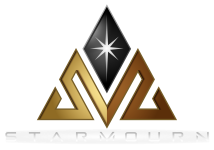10.12 Archaeology
Archaeology is a thriving profession in the Starmourn Sector. All across the wildernesses of the Sector, spacers can uncover archaeological finds which have the capacity to reveal the prehistoric ecologies and material cultures of the Sector's diverse celestial bodies.
Archaeological findings come in two main categories: fossils and fragments. Fossils contain records of prehistoric ecologies, whereas fragments are bits and pieces of material culture. In museums, the former can be reconstructed into a DNA sequence, and the latter can be restored into full-fledged antiquities more than the sum of their parts (see HELP MUSEUMS for more information).
To begin your archaeological career, speak with a curator NPC at a factional Museum (see HELP MUSEUMS for locations). They will offer you a selection of celestial bodies with known areas of archaeological interest.
Once you have selected the celestial body to establish a dig site, you will assemble your dig team with the help of the curator. By default, you will be offered 5 different possible team members, out of which you must select 3.
Once you have confirmed your team, you will proceed to the selected celestial body and, after having found the entrance, EXPLORE the DIGSITE. Your assembled team will meet you there and get the process started.
You can view the status of your dig site, or lack of dig site, at any time via ARCHAEOLOGY STATUS.
The Dig Site and Your Team
--------------------------
Dig team members have two modifiers of note: a Profession and a Trait.
The Professions of your dig team members impact the results of your dig site. Interns are careful and cautious, improving the quality of your finds; Supervisors keep everyone on task, improving the overall speed of the dig site; paleontologists specialize in the examination of the fossil record, and improve your chances that your find(s) will be fossils, and improves your chances of finding rarer fossils; anthropologists in the Starmourn Sector specialize in the study of sentient life, particularly as revealed through material culture, and provide similar bonuses as the paleontologist, except for fragments.
You may only have 1 supervisor on a dig team, and only 1 specialist (paleontologists or anthropologists), but as many interns as you would like.
Every so often (not more than once per Sync), a member of your dig team will run into a Complication. Their Trait will affect the nature of this Complication:
- Skittish team members get freaked out by local wildlife, and may ask you to clear the area.
- Posh team members struggle to work in the absence of high art, and may ask for a particular furnishing or art pattern.
- Foodie team members love food and drink, and may ask for a particular cuisine or mixology pattern.
- Fashionista team members are constantly browsing fashion zines, and sometimes this gets in their way of focusing on the dig. They may ask for a particular fashion or jewelry pattern.
- Distractible team members are just that. They can have any sort of complication.
You will receive a message when a team member encounters a complication. Completing it will shorten the overall time of your dig. If after three RL days you have not resolved their complication, they will move on with their lives, but you will not gain their Profession bonus.
Dig sites can be expected to take anywhere from 1 to 2 RL weeks, on the lower end if you are completing complications in a timely manner, and less with a Supervisor.
Concluding a dig site
---------------------
When your team has finished their excavation, you will receive a message indicating so. You have 7 RL days from this point to retrieve the findings, which you can do by GREETing one of your team members.
After this, your team will get to work packing up the site. You will shortly be able to start a new dig site by visiting a curator NPC once again!
You will likely want your finds to end up in a museum so that they can be properly preserved and studied and to protect them from decay. You may also house them in a private collection using a personal archaeological suspension device.
